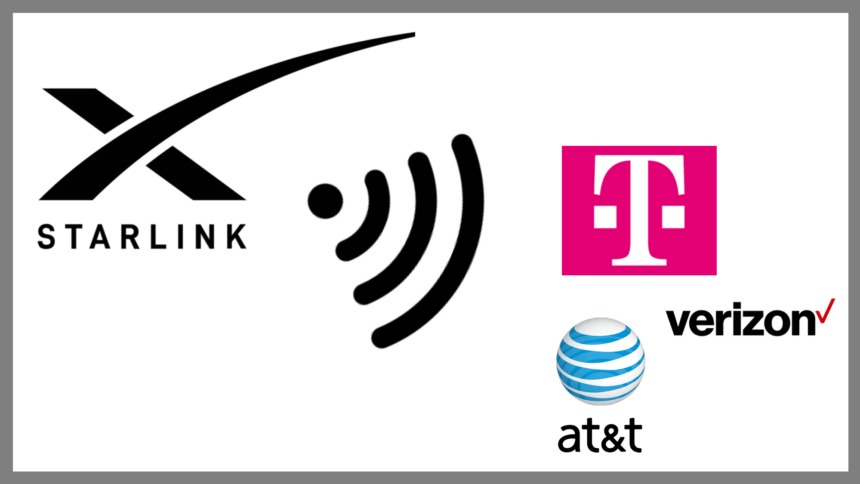T-Mobile is shaking up the satellite-to-phone industry by expanding its Starlink-powered cellular beta to AT&T and Verizon customers. Initially launched as an exclusive service for T-Mobile’s Go5G Next users, the company now plans to offer satellite connectivity to anyone with a compatible phone—regardless of their carrier.
The decision follows Verizon’s high-budget Super Bowl ad featuring astronaut Buzz Aldrin, which promoted its satellite-to-phone capabilities. In response, T-Mobile fast-tracked its expansion plans, reinforcing its position in the growing space-based mobile network sector.
What’s Happening & Why This Matters
Expanding Starlink Access: A Competitive Decision?
T-Mobile’s Starlink cellular service will officially launch in July, introducing tiered pricing for different carriers.
- T-Mobile’s Go5G Next plan users receive free Starlink access, which is included as a built-in feature.
- Other T-Mobile customers can opt-in for $15 per month per line, enabling satellite messaging in remote locations.
- AT&T and Verizon customers can join for $20 per month per line, provided they have an unlocked, eSIM-compatible phone.
- The service currently supports SMS messaging in dead zones, with future updates expected to enable voice and data usage.
Why Did T-Mobile Open Starlink to Rivals?
T-Mobile initially planned to keep Starlink exclusive to its users, but Verizon’s big-budget satellite campaign forced a strategic pivot.
- Verizon’s Super Bowl ad positioned the carrier as the leader in satellite-to-phone services despite its reliance on Apple’s satellite messaging and Skylo, a third-party provider.
- T-Mobile executives saw the messaging as misleading, leading to an accelerated rollout of Starlink connectivity for all carriers.
- Clint Patterson, T-Mobile’s SVP of marketing, called Verizon’s ad “borderline deceptive,” emphasizing T-Mobile’s lead in satellite connectivity.
- T-Mobile countered with its high-profile commercial, officially announcing the expansion of Starlink access beyond its customer base.
Supported Devices & Connectivity
T-Mobile has published an official list of compatible phones, allowing users to verify Starlink direct-to-cell support.
- Apple: iPhone 14 and later, including the iPhone 16 series.
- Google: Pixel 9 lineup, with potential support for future models.
- Samsung: Galaxy S21 and later, including the Galaxy Z Flip and Fold series.
- Motorola: 2024 Razr and Edge models, confirming compatibility with Starlink.
- T-Mobile’s REVL 7 5G and REVL 7 Pro 5G also support Starlink connectivity, ensuring customers have affordable device options.
- Devices must be unlocked and eSIM-capable to work on AT&T and Verizon’s networks via Starlink.
SpaceX’s Role in T-Mobile’s Satellite Ambitions
The service operates through a network of over 400 Starlink satellites, with additional launches planned to increase signal reliability and reduce dead zones.
- SpaceX secured FCC approval to operate the service, allowing T-Mobile to use its licensed 1900MHz spectrum for satellite communications.
- Early beta testers report mixed experiences, with some praising remote-area coverage while others mention intermittent connectivity issues.
- SpaceX and T-Mobile continue optimizing the system, promising improved signal strength as more satellites are launched into orbit.
- T-Mobile CEO Mike Sievert confidently stated that “dead zones are numbered,” reinforcing the company’s leadership in the satellite-to-phone market.
TF Summary: What’s Next
T-Mobile’s unexpected expansion of Starlink connectivity to AT&T and Verizon users is a true game-changer in satellite-to-phone communication. As SpaceX continues deploying satellites, coverage will improve, paving the way for voice and data capabilities beyond SMS messaging. With T-Mobile, Verizon, and AT&T now battling for dominance in satellite communications, consumers will benefit from enhanced network coverage, better service reliability, and increased competition driving innovation.
— Text-to-Speech (TTS) provided by gspeech


